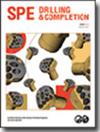Self-Verification Program in bp: Success Story of Major Accident Risk Management via Bowtie Barrier Model
IF 1.2
4区 工程技术
Q3 ENGINEERING, PETROLEUM
引用次数: 0
Abstract
bp’s (“the company’s”) wells organization manages its operational risks through what is known as the “three lines of defense” model. This is a three-tiered approach; the first line of defense is self-verification, which wells assets apply to prevent or mitigate operational risks. The second line of defense is conducted by the safety and operational risk function using deep technical expertise. The third line of defense is provided by group audit. In this paper, we discuss the wells self-verification program evolution from its first implementation and share case studies, results, impact, lessons learned, and further steps planned as part of the continuous improvement cycle.The company’s wells organization identified nine major accident risks that have the potential to result in significant health, safety, and environment (HSE) impacts. Examples include loss of well control (LoWC), offshore vessel collision, and dropped objects. The central risk team developed bowties for these risks, with prevention barriers on cause legs and mitigation barriers on consequence legs. Detailed risk bowties are fundamental to wells self-verification, adding technical depth to allow more focused verification to be performed when compared with the original bowties, because verification is now conducted using checklists targeting barriers at their component level, defined as critical tasks and equipment. Barriers are underpinned by barrier enablers (underlying supporting systems and processes) such as control of work, safe operating limits, inspection and maintenance, etc. Checklists are standardized and are available through a single, global digital application. This permits the verifiers, typically wellsite leaders, to conduct meaningful verification conversations, record the resulting actions, track them to closure within the application, and gain a better understanding of any cumulative impacts, ineffective barriers, and areas to focus on.Self-verification results are reviewed at rig, region, wells, and upstream levels. Rigs and regions analyze barrier effectiveness and gaps and implement corrective actions with contractors at the rig or region level. Global insights are collated monthly and presented centrally to wells leadership. Common themes and valuable learnings are then addressed at the functional level, shared across the organization, or escalated by the leadership.The self-verification program at the barrier component level proved to be an effective risk management tool for the company’s wells organization. It helps to continuously identify risks, address gaps, and learn from them. Recorded assessments not only provide the wells organization with barrier performance data but also highlight opportunities to improve. Leadership uses the results from barrier verification to gain a holistic view of how major accident risks are managed. Program evolution has also eliminated duplicate reviews, improved clarity of barrier components, and improved sustainability through applying a systematic approach, standardization, digitization, and procedural discipline.bp中的自验证程序:基于Bowtie-Barrier模型的重大事故风险管理的成功案例
英国石油公司(以下简称“公司”)的威尔斯组织通过所谓的“三道防线”模式来管理其运营风险。这是一种三层方法;第一道防线是自我验证,wells资产运用自我验证来预防或减轻运营风险。第二道防线由安全和操作风险职能部门利用深厚的技术专长进行。第三道防线由集团审计提供。在本文中,我们讨论了油井自验证计划从第一次实施开始的演变,并分享了案例研究、结果、影响、经验教训,以及作为持续改进周期一部分计划的进一步步骤。该公司的钻井组织确定了九种可能对健康、安全和环境(HSE)产生重大影响的重大事故风险。示例包括井控损失(LoWC)、海上船只碰撞和坠落物体。中央风险团队为这些风险开发了蝴蝶结,在原因腿上设置预防屏障,在后果腿上设置缓解屏障。详细的风险领结是油井自我验证的基础,与原始领结相比,增加了技术深度,可以进行更集中的验证,因为现在的验证是使用针对其组件级别屏障的检查表进行的,这些屏障被定义为关键任务和设备。屏障由屏障使能器(底层支持系统和流程)支撑,如工作控制、安全操作限制、检查和维护等。检查表是标准化的,可通过单一的全球数字应用程序获得。这使得验证人员(通常是井场领导)能够进行有意义的验证对话,记录由此产生的行动,在应用程序中跟踪它们直至关闭,并更好地了解任何累积影响、无效屏障和需要关注的领域。自验证结果在钻井平台、区域、油井和上游层面进行审查。钻井平台和区域分析屏障有效性和差距,并与钻井平台或区域级别的承包商一起实施纠正措施。每月对全球见解进行整理,并集中向油井领导层报告。然后,在职能层面解决共同主题和有价值的经验教训,在整个组织中共享,或由领导层升级。屏障组件层面的自我验证程序被证明是该公司油井组织的有效风险管理工具。它有助于不断识别风险、解决差距并从中吸取教训。记录的评估不仅为油井组织提供了屏障性能数据,还突出了改进的机会。领导层利用障碍验证的结果来全面了解如何管理重大事故风险。项目发展还消除了重复审查,提高了障碍组成部分的清晰度,并通过应用系统方法、标准化、数字化和程序纪律提高了可持续性。
本文章由计算机程序翻译,如有差异,请以英文原文为准。
求助全文
约1分钟内获得全文
求助全文
来源期刊

SPE Drilling & Completion
工程技术-工程:石油
CiteScore
4.20
自引率
7.10%
发文量
29
审稿时长
6-12 weeks
期刊介绍:
Covers horizontal and directional drilling, drilling fluids, bit technology, sand control, perforating, cementing, well control, completions and drilling operations.
 求助内容:
求助内容: 应助结果提醒方式:
应助结果提醒方式:


